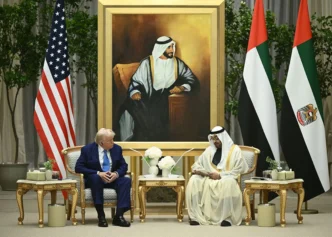Trump Seeks Investments from Arab Countries to Revitalize U.S. Economy
In a historic shift during his visit to Saudi Arabia, Qatar, and the United Arab Emirates (UAE), U.S. President Donald Trump took a bold approach, seeking foreign investments to bolster the U.S. economy. Traditionally, the U.S. has been the world’s largest consumer of goods and services, with foreign nations looking to invest in America’s technology, real estate, and industries. However, Trump’s emphasis during this Middle Eastern tour was not solely about selling products like planes, cars, or military equipment but also about attracting massive investments for America’s future.
A Shift in Focus: America’s Investment Need
America has long been known as the land of opportunity, attracting foreign investments from countries such as Japan, which historically purchased significant American industries. Over the years, as the global landscape changed, America’s once dominant industrial power began to shift. Today, despite its tech giants like Apple, Google, and Microsoft continuing to drive technological innovation, much of the industrial and manufacturing base that once defined the U.S. economy has eroded.
Trump’s request for investments from Arab countries, totaling $600 billion from Saudi Arabia, $200 billion from Qatar, and an astounding $1.4 trillion from the UAE, highlights a shift in America’s economic reality. These investments signal a strategic response to the fact that America’s industrial edge has dulled, and the U.S. is now a consumption-driven society rather than a global manufacturing powerhouse.
UAE’s $1.4 Trillion Investment Plan: A Step Toward Infrastructure Revival
The $1.4 trillion investment from the UAE, set to be spread over a decade, raises the question: how will these funds be used? Trump faces a decision on whether to invest in reviving America’s decaying infrastructure, including crumbling highways and outdated airports, or whether he will channel these funds into setting up new industries. The future of American manufacturing and infrastructure may depend on how these funds are deployed in the coming years.
While the U.S. continues to lead in technology, its industrial base has withered. The dilemma that Trump faces is rooted in balancing America’s need for foreign investment with its desire to retain control over its technological sector. The fear of foreign ownership in strategic industries remains, as evidenced by the decision under President Biden to block a Japanese steel giant’s acquisition of an American company.
America’s Need for Foreign Investment
Trump’s focus on securing foreign investments points to a deeper issue within the U.S. economy. Despite having the largest number of billionaires, America seems unable to reinvest in its own infrastructure and industries at the scale required. Trump’s tax cuts, which were intended to encourage American investment, have not yielded the desired results. This has pushed him to seek out foreign capital to fill the gap.
As America grapples with its shifting economic position, the influx of $2 trillion in foreign investment from Arab nations presents both a challenge and an opportunity. The true impact of these investments will depend on how effectively they are utilized to revitalize American industries, infrastructure, and innovation.
Conclusion: The Future of America’s Economy
In summary, President Trump’s pursuit of investment from Arab countries reflects the changing dynamics of the global economy. America, once a beacon of industrial power, now finds itself in need of external capital to maintain its global position. Whether this investment will lead to a renaissance of U.S. infrastructure or an overhaul of American industries remains to be seen. The next few years will be critical in determining whether Trump’s strategy can restore the economic dominance America once enjoyed.














